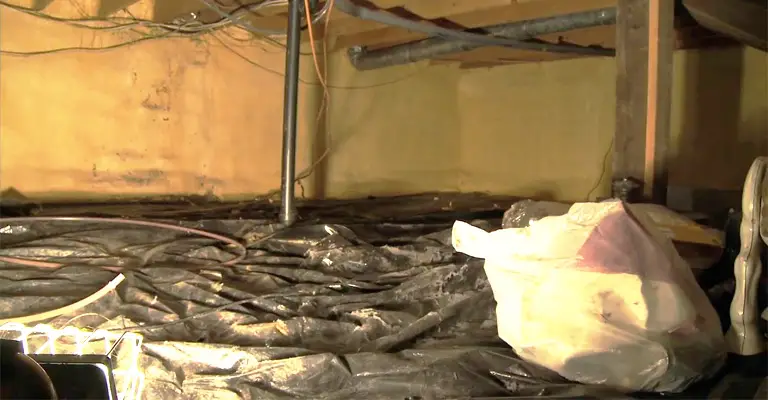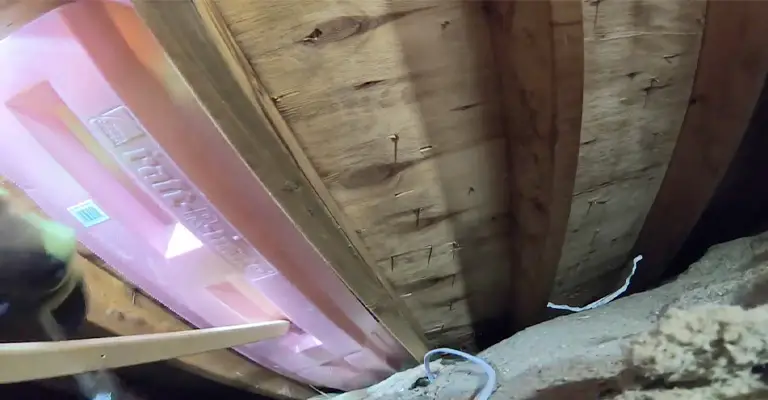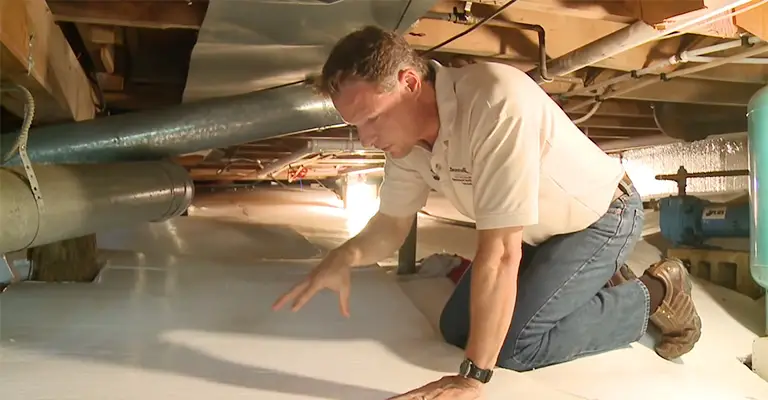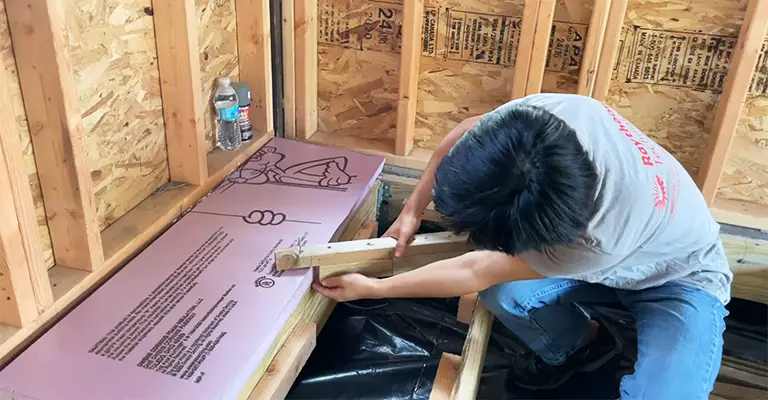Insulation is key when it comes to keeping your home comfortable and energy efficient. And if you have a floor that lacks a crawl space, you may be wondering how to properly insulate it.
Without the convenience of a crawl space, insulating a floor can seem daunting, but fear not!
With the right tools and techniques, you can easily insulate a floor with no crawl space and reap the benefits of a more comfortable, energy-efficient home.
Insulating A Very Shallow Crawlspace [A Q&A From GBA Forum]

Insulating a shallow crawlspace is the issue in renovating an old farmhouse near Rochester, NY.
The crawlspace, which is less than a foot deep, has a dirt floor and a fieldstone foundation and was constructed several decades ago as part of an addition.
A neighbor who faced a similar situation with his farmhouse addition suggested a solution that involved temporarily removing the exterior wall and floor structure.
In addition, digging out a deeper crawlspace with a backhoe, pouring a concrete floor, and then reassembling the wall and floor structure.
However, this solution was costly, and the homeowner wants to explore a more affordable approach.
The homeowner is considering leaving the shallow foundation intact but making it energy efficient by accessing the space via the temporary removal of the subfloor.
The plan is to lay down a poly sheet vapor barrier on the dirt floor, spray foam the fieldstone foundation from the dirt floor to the rim joists and insulate the entire structure with cellulose.
The crawlspace area would be permanently sealed after the subfloor is reinstalled.
However, the homeowner is concerned that this approach might create a moisture trap between the poly sheeting and the subfloor.
And is wondering whether a high-perm subfloor material could be used to allow any trapped vapor to escape to the interior.
Solution
In some cases, homeowners with older houses may opt for a risky remodeling solution simply because the best solution is too costly.
A major concern with the list of measures above is the last two: “fill the entire crawlspace with cellulose insulation” and “keep the crawlspace forever sealed.” These could lead to issues in the future.
However, if they made some modifications to your plan, it could become less risky. They could use closed-cell spray foam to insulate the interior of the stone foundation instead of cellulose insulation.
Also, include a trap door for periodic inspections, making it easier to monitor and address any issues that may arise. This plan still has some level of risk, especially if the crawlspace experiences flooding during damp weather.
Regarding your question, “Am I creating a moisture trap between the poly sheeting and the subfloor?” the answer is no, you are not creating a moisture trap with the poly sheeting and subfloor.
However, if the crawlspace were to flood, the cellulose insulation could become a saturated and problematic mess.
One Final Point
The ideal solution for insulating a shallow crawlspace would be to remove the floor joists and install a concrete slab over crushed stone with a continuous horizontal layer of rigid foam. However, this approach is likely to be more expensive.
How to Insulate a Tight Crawl Space?

Your home’s floor can cause discomfort due to various issues, ranging from obvious cold floors to drafts inside your house.
If you’re planning to address these problems by adding spray foam insulation, there’s a catch.
It may not be possible for an installer to crawl underneath the floor if the crawl space is less than 18 inches in height or if your home is built on a slab foundation.
Rest assured that an experienced contractor can handle the task of insulating a floor even without having access to the crawl space.
How Do You Insulate a Tight Crawl Space?

To install spray foam insulation in an inaccessible crawl space, the process may involve some pulling and cutting. Although this may sound intimidating, it is a necessary step to ensure proper insulation of the crawl space beneath.
The specific method used will depend on whether your home has carpet or hardwood flooring. First, let’s discuss the scenario for homes with carpeted floors.
To insulate a shallow crawl space with carpeted floors, the first step is to pull up the carpet. Next, the installers will create one-foot access points around the room’s perimeter, allowing them to spray foam onto the crawl space walls below.
Once the installation is complete, the carpet strips are replaced, and the carpet is repositioned in its original location.
We suggest having a professional carpeting company come back to secure the carpet to the floor to ensure that it is properly reinstalled.
Insulating a shallow crawl space with hardwood floors is slightly different. In this scenario, the crew will cut at the tongue and groove of the wood floor to create one-foot strips for access.
The foam insulation is sprayed onto the crawl space walls before replacing the flooring. A reliable contractor will ensure that the wood floor is reinstalled securely.
It’s important to note that while guests may not notice any difference, homeowners may notice a slight change in the floor due to the cuts made during installation.
While there may be a slight aesthetic difference, insulating the floor can effectively solve the problems of cold floors and uncomfortable rooms.
The process is generally the same if you’re wondering how to insulate a floor without a crawl space. Sometimes it may be more practical to spray the foam insulation directly into the floor joists.
For homes with carpeted floors, the carpet will need to be removed to cut access strips into the floor, allowing for the foam insulation to be sprayed into the cavity below.
Alternatively, the wood would be cut along the joists for hardwood floors to create access points for spraying the foam insulation.
Creating An Air Seal Throughout Your Home
While insulating the space below your floor or crawl space is a good start to improving your home’s comfort, creating an air seal throughout the entire building envelope can have an even greater impact.
By insulating the entire building envelope and creating an air seal, your home will be more comfortable, but it can also help save you money on your monthly energy bills.
The reason is simple: the foam insulation will prevent outside air from getting inside while keeping the air you pay to treat inside your home.
This will reduce the amount of energy needed to maintain a comfortable temperature, resulting in lower monthly energy bills.
Final Words
In conclusion, insulating the space below your floor or crawl space can solve problems like cold floors and uncomfortable rooms.
Insulating a shallow crawl space with carpeted or hardwood floors involves pulling up the carpet or cutting the wood floor to create access points for spraying foam insulation onto the crawl space walls.
Insulating the entire building envelope can provide an even greater impact on your home’s comfort and energy efficiency by creating an air seal that prevents outside air from getting inside and keeping the treated air inside.
This results in lower monthly energy bills and a more comfortable home environment. Working with an experienced contractor is important to ensure that the insulation is installed correctly and effectively.







